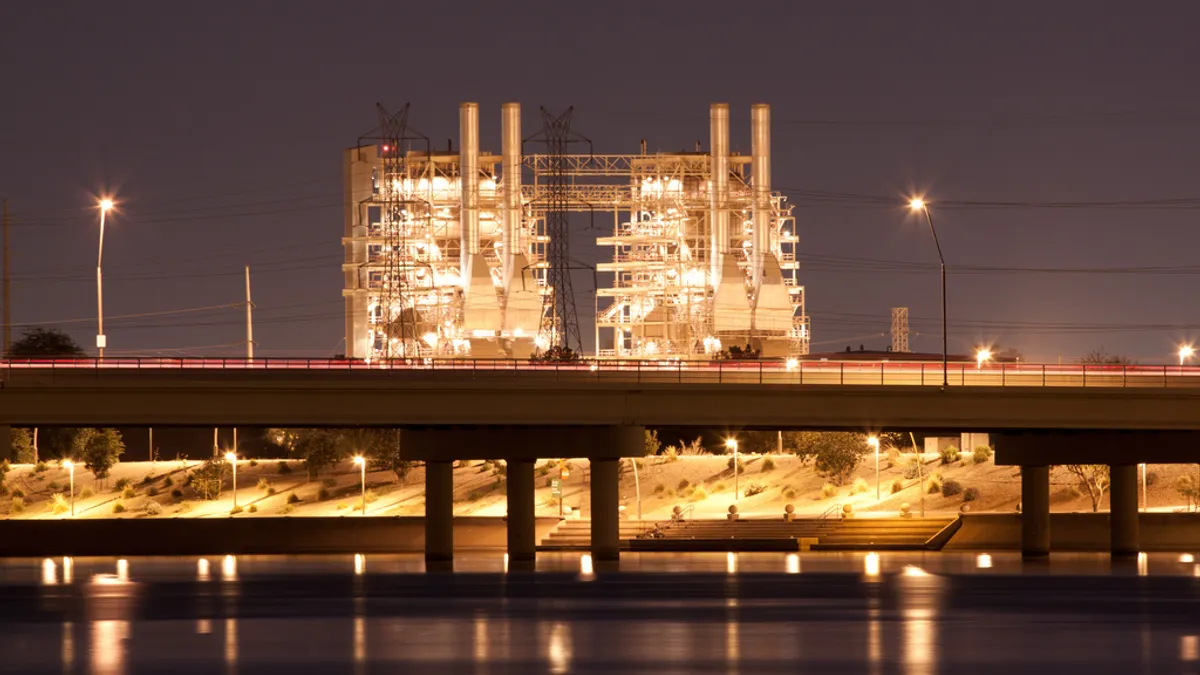Dive Brief:
- Vistra Energy and Dynegy Corp. this morning announced an all-stock merger which aims to create the leading integrated power company in key competitive power markets in the United States. The companies anticipate closing the transaction in the second quarter of 2018.
- According to Reuters, the economics work out to a $1.74 billion offer for Vistra to acquire Dynegy. Shareholders saw Dynegy stock spike last week on a Wall Street Journal report that said the companies were close to a deal.
- The combined company would own more than 46 GW of capacity, surpassing NRG Energy, which claims to be the largest IPP in the country. About 60% of that generation is gas-fired, and almost 85% of it is located in the ERCOT, PJM and ISO-NE competitive power markets.
Dive Insight:
A Wall Street Journal report last week caused Dynegy's stock price to surge, as details emerged that the deal with Vistra was close. The deal was initially reported to be in the works back in May. The deal is another sign of consolidation among independent power producers under pressure from a variety of sources, including cheap natural gas and renewable energy.
While the companies emphasized their natural gas-fired generation in the announcement, both have significant coal resources.
Under the terms of the agreement, announced this morning, Dynegy shareholders will receive 0.652 shares of Vistra common stock for each share of Dynegy common stock they own. The swap will result in Vistra Energy shareholders owning about 79% of the combined company, and Dynegy shareholders owning 21%. Based on Vistra closing price of $20.30/share on Oct. 27, the companies said Dynegy shareholders would receive $13.24/share.
The companies say Dynegy’s generation capacity and retail footprint, combined with Vistra' integrated model in Texas, "is expected to create the lowest-cost integrated power company in the industry" and will "position the combined company as the leading integrated retail and generation platform throughout key competitive power markets in the U.S."
The combined company will serve approximately 240,000 commercial and industrial customers and 2.7 million residential customers, with estimated retail sales of 75 terawatt-hours in 2018.
Vistra Energy President and CEO Curt Morgan called the deal a "transformative opportunity" for the two companies.
"The resulting combined enterprise is projected to have the lowest-cost structure in the industry and will benefit from weather and market diversification that, when combined with Vistra Energy’s balance sheet strength, will provide a platform for future growth," Morgan said in a statement. "The result will be a leading integrated power company with significant scale in the key U.S. competitive markets."
Among the projected benefits, the two companies say their combined efforts will create an integrated retail and generation platform that will have approximately 40 GW "of high-quality, low-cost, environmentally compliant power generation assets" concentrated in Texas, PJM Interconnection and the ISO New England markets. Vistra said these are "the most desirable competitive markets in the U.S."
The combined company will have generation in a dozen states combined retail platform serving almost 3 million customers. Approximately half of the new Vistra Energy's gross margin is projected to be derived from capacity revenues and retail margin, the companies said.
The companies also touted their combined finances. They expect approximately $14 billion of adjusted EBITDA expected to be generated between 2018 and 2022, and the combined company is projected to have approximately $5.5 billion in excess capital available, to be used for balance sheet improvements, growth investments, "and other value accretive opportunities."















